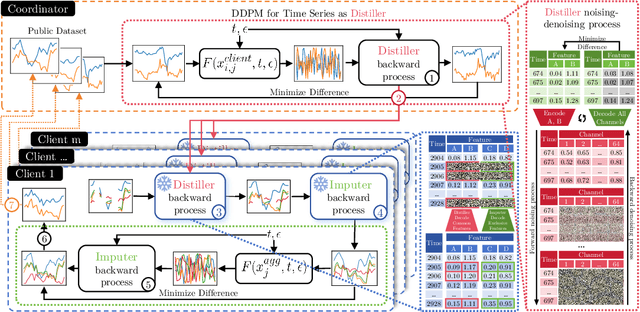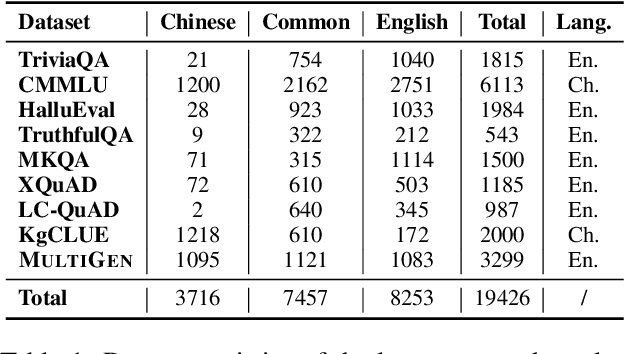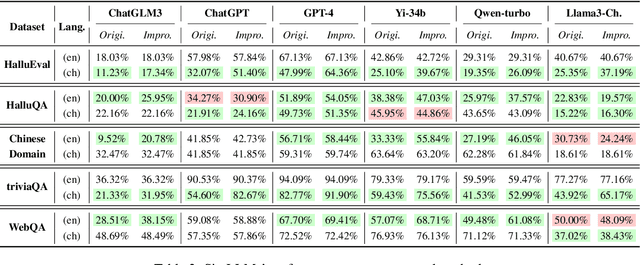Chenrui Fan
Understanding the Thinking Process of Reasoning Models: A Perspective from Schoenfeld's Episode Theory
Sep 18, 2025Abstract:While Large Reasoning Models (LRMs) generate extensive chain-of-thought reasoning, we lack a principled framework for understanding how these thoughts are structured. In this paper, we introduce a novel approach by applying Schoenfeld's Episode Theory, a classic cognitive framework for human mathematical problem-solving, to analyze the reasoning traces of LRMs. We annotated thousands of sentences and paragraphs from model-generated solutions to math problems using seven cognitive labels (e.g., Plan, Implement, Verify). The result is the first publicly available benchmark for the fine-grained analysis of machine reasoning, including a large annotated corpus and detailed annotation guidebooks. Our preliminary analysis reveals distinct patterns in LRM reasoning, such as the transition dynamics between cognitive states. This framework provides a theoretically grounded methodology for interpreting LRM cognition and enables future work on more controllable and transparent reasoning systems.
Where to find Grokking in LLM Pretraining? Monitor Memorization-to-Generalization without Test
Jun 26, 2025Abstract:Grokking, i.e., test performance keeps improving long after training loss converged, has been recently witnessed in neural network training, making the mechanism of generalization and other emerging capabilities such as reasoning mysterious. While prior studies usually train small models on a few toy or highly-specific tasks for thousands of epochs, we conduct the first study of grokking on checkpoints during one-pass pretraining of a 7B large language model (LLM), i.e., OLMoE. We compute the training loss and evaluate generalization on diverse benchmark tasks, including math reasoning, code generation, and commonsense/domain-specific knowledge retrieval tasks. Our study, for the first time, verifies that grokking still happens in the pretraining of large-scale foundation models, though different data may enter grokking stages asynchronously. We further demystify grokking's "emergence of generalization" by investigating LLM internal dynamics. Specifically, we find that training samples' pathways (i.e., expert choices across layers) evolve from random, instance-specific to more structured and shareable between samples during grokking. Also, the complexity of a sample's pathway reduces despite the converged loss. These indicate a memorization-to-generalization conversion, providing a mechanistic explanation of delayed generalization. In the study, we develop two novel metrics to quantify pathway distance and the complexity of a single pathway. We show their ability to predict the generalization improvement on diverse downstream tasks. They are efficient, simple to compute and solely dependent on training data. Hence, they have practical value for pretraining, enabling us to monitor the generalization performance without finetuning and test. Theoretically, we show that more structured pathways reduce model complexity and improve the generalization bound.
ColorBench: Can VLMs See and Understand the Colorful World? A Comprehensive Benchmark for Color Perception, Reasoning, and Robustness
Apr 10, 2025Abstract:Color plays an important role in human perception and usually provides critical clues in visual reasoning. However, it is unclear whether and how vision-language models (VLMs) can perceive, understand, and leverage color as humans. This paper introduces ColorBench, an innovative benchmark meticulously crafted to assess the capabilities of VLMs in color understanding, including color perception, reasoning, and robustness. By curating a suite of diverse test scenarios, with grounding in real applications, ColorBench evaluates how these models perceive colors, infer meanings from color-based cues, and maintain consistent performance under varying color transformations. Through an extensive evaluation of 32 VLMs with varying language models and vision encoders, our paper reveals some undiscovered findings: (i) The scaling law (larger models are better) still holds on ColorBench, while the language model plays a more important role than the vision encoder. (ii) However, the performance gaps across models are relatively small, indicating that color understanding has been largely neglected by existing VLMs. (iii) CoT reasoning improves color understanding accuracies and robustness, though they are vision-centric tasks. (iv) Color clues are indeed leveraged by VLMs on ColorBench but they can also mislead models in some tasks. These findings highlight the critical limitations of current VLMs and underscore the need to enhance color comprehension. Our ColorBenchcan serve as a foundational tool for advancing the study of human-level color understanding of multimodal AI.
Missing Premise exacerbates Overthinking: Are Reasoning Models losing Critical Thinking Skill?
Apr 09, 2025Abstract:We find that the response length of reasoning LLMs, whether trained by reinforcement learning or supervised learning, drastically increases for ill-posed questions with missing premises (MiP), ending up with redundant and ineffective thinking. This newly introduced scenario exacerbates the general overthinking issue to a large extent, which we name as the MiP-Overthinking. Such failures are against the ``test-time scaling law'' but have been widely observed on multiple datasets we curated with MiP, indicating the harm of cheap overthinking and a lack of critical thinking. Surprisingly, LLMs not specifically trained for reasoning exhibit much better performance on the MiP scenario, producing much shorter responses that quickly identify ill-posed queries. This implies a critical flaw of the current training recipe for reasoning LLMs, which does not encourage efficient thinking adequately, leading to the abuse of thinking patterns. To further investigate the reasons behind such failures, we conduct fine-grained analyses of the reasoning length, overthinking patterns, and location of critical thinking on different types of LLMs. Moreover, our extended ablation study reveals that the overthinking is contagious through the distillation of reasoning models' responses. These results improve the understanding of overthinking and shed novel insights into mitigating the problem.
Federated Time Series Generation on Feature and Temporally Misaligned Data
Oct 28, 2024



Abstract:Distributed time series data presents a challenge for federated learning, as clients often possess different feature sets and have misaligned time steps. Existing federated time series models are limited by the assumption of perfect temporal or feature alignment across clients. In this paper, we propose FedTDD, a novel federated time series diffusion model that jointly learns a synthesizer across clients. At the core of FedTDD is a novel data distillation and aggregation framework that reconciles the differences between clients by imputing the misaligned timesteps and features. In contrast to traditional federated learning, FedTDD learns the correlation across clients' time series through the exchange of local synthetic outputs instead of model parameters. A coordinator iteratively improves a global distiller network by leveraging shared knowledge from clients through the exchange of synthetic data. As the distiller becomes more refined over time, it subsequently enhances the quality of the clients' local feature estimates, allowing each client to then improve its local imputations for missing data using the latest, more accurate distiller. Experimental results on five datasets demonstrate FedTDD's effectiveness compared to centralized training, and the effectiveness of sharing synthetic outputs to transfer knowledge of local time series. Notably, FedTDD achieves 79.4% and 62.8% improvement over local training in Context-FID and Correlational scores.
1+1>2: Can Large Language Models Serve as Cross-Lingual Knowledge Aggregators?
Jun 20, 2024



Abstract:Large Language Models (LLMs) have garnered significant attention due to their remarkable ability to process information across various languages. Despite their capabilities, they exhibit inconsistencies in handling identical queries in different languages, presenting challenges for further advancement. This paper introduces a method to enhance the multilingual performance of LLMs by aggregating knowledge from diverse languages. This approach incorporates a low-resource knowledge detector specific to a language, a language selection process, and mechanisms for answer replacement and integration. Our experiments demonstrate notable performance improvements, particularly in reducing language performance disparity. An ablation study confirms that each component of our method significantly contributes to these enhancements. This research highlights the inherent potential of LLMs to harmonize multilingual capabilities and offers valuable insights for further exploration.
Toward Robust Imperceptible Perturbation against Unauthorized Text-to-image Diffusion-based Synthesis
Nov 22, 2023



Abstract:Text-to-image diffusion models allow seamless generation of personalized images from scant reference photos. Yet, these tools, in the wrong hands, can fabricate misleading or harmful content, endangering individuals. To address this problem, existing poisoning-based approaches perturb user images in an imperceptible way to render them "unlearnable" from malicious uses. We identify two limitations of these defending approaches: i) sub-optimal due to the hand-crafted heuristics for solving the intractable bilevel optimization and ii) lack of robustness against simple data transformations like Gaussian filtering. To solve these challenges, we propose MetaCloak, which solves the bi-level poisoning problem with a meta-learning framework with an additional transformation sampling process to craft transferable and robust perturbation. Specifically, we employ a pool of surrogate diffusion models to craft transferable and model-agnostic perturbation. Furthermore, by incorporating an additional transformation process, we design a simple denoising-error maximization loss that is sufficient for causing transformation-robust semantic distortion and degradation in a personalized generation. Extensive experiments on the VGGFace2 and CelebA-HQ datasets show that MetaCloak outperforms existing approaches. Notably, MetaCloak can successfully fool online training services like Replicate, in a black-box manner, demonstrating the effectiveness of MetaCloak in real-world scenarios. Our code is available at https://github.com/liuyixin-louis/MetaCloak.
MetaTool Benchmark for Large Language Models: Deciding Whether to Use Tools and Which to Use
Oct 12, 2023



Abstract:Large language models (LLMs) have garnered significant attention due to their impressive natural language processing (NLP) capabilities. Recently, many studies have focused on the tool utilization ability of LLMs. They primarily investigated how LLMs effectively collaborate with given specific tools. However, in scenarios where LLMs serve as intelligent agents, as seen in applications like AutoGPT and MetaGPT, LLMs are expected to engage in intricate decision-making processes that involve deciding whether to employ a tool and selecting the most suitable tool(s) from a collection of available tools to fulfill user requests. Therefore, in this paper, we introduce MetaTool, a benchmark designed to evaluate whether LLMs have tool usage awareness and can correctly choose tools. Specifically, we create a dataset called ToolE within the benchmark. This dataset contains various types of user queries in the form of prompts that trigger LLMs to use tools, including both single-tool and multi-tool scenarios. Subsequently, we set the tasks for both tool usage awareness and tool selection. We define four subtasks from different perspectives in tool selection, including tool selection with similar choices, tool selection in specific scenarios, tool selection with possible reliability issues, and multi-tool selection. We conduct experiments involving nine popular LLMs and find that the majority of them still struggle to effectively select tools, highlighting the existing gaps between LLMs and genuine intelligent agents. However, through the error analysis, we found there is still significant room for improvement. Finally, we conclude with insights for tool developers that follow ChatGPT to provide detailed descriptions that can enhance the tool selection performance of LLMs.
Unlearnable Graph: Protecting Graphs from Unauthorized Exploitation
Mar 05, 2023Abstract:While the use of graph-structured data in various fields is becoming increasingly popular, it also raises concerns about the potential unauthorized exploitation of personal data for training commercial graph neural network (GNN) models, which can compromise privacy. To address this issue, we propose a novel method for generating unlearnable graph examples. By injecting delusive but imperceptible noise into graphs using our Error-Minimizing Structural Poisoning (EMinS) module, we are able to make the graphs unexploitable. Notably, by modifying only $5\%$ at most of the potential edges in the graph data, our method successfully decreases the accuracy from ${77.33\%}$ to ${42.47\%}$ on the COLLAB dataset.
 Add to Chrome
Add to Chrome Add to Firefox
Add to Firefox Add to Edge
Add to Edge